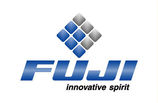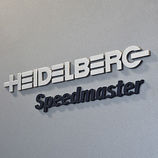Online support HOTLINE: 84-2439437063
|
FOR SPECIAL OCCASIONS: LASER AND INKJET PAPER.(16/01/2015)The next bump up in quality from photocopy paper is laser and inkjet paper. Both are specifically formulated for their respective technologies, so they can produce optimum quality. Also, they are acid-free, so the pages won’t yellow and become brittle after a few years. Most inkjet and laser papers are heavier and brighter than photocopy paper.
Laser paper is hard and smooth, with a surface designed to withstand the high temperatures required for fusing toner particles to it. This makes toner impressions cleaner, sharper, and more contrast. Similarly, inkjet paper is coated with clay or calcium carbonate, which aids in absorbing ink without mushing or smearing. It also makes colors look more vivid and accurate. There’s one important caveat, though, to using inkjet and laser paper: Don’t mix them up. The smooth, hard surface that is great for lasers doesn’t absorb ink as well, so the excess can run and smear. And the inkjet paper coating isn’t designed for high temperatures, so running it through a laser printer not only significantly degrades print and image quality, it can actually damage the hot fuser rollers. Then there’s the cost: Laser and inkjet paper is two to five times more expensive than photocopy paper. But if you are printing business graphics or photos on nonglossy paper, if you want or need to make a good impression, these are the times when you should bite the bullet and print on the best paper available for your inkjet or laser. Another consideration is whether to buy inkjet and laser paper directly from the manufacturer. And again, we'll say that this depends on how important the document you are printing is. Most manufacturers produce paper that they say works best with their printers. If the quality of your document is important, it's probably best to go with the manufacturers' paper. But for everyday printing purposes, a store brand will do the job just fine.
Source: http://www.computershopper.com/feature/printing-basics-how-to-choose-the-right-kind-of-paper/(page)/4 Other news
|
HTML Code









